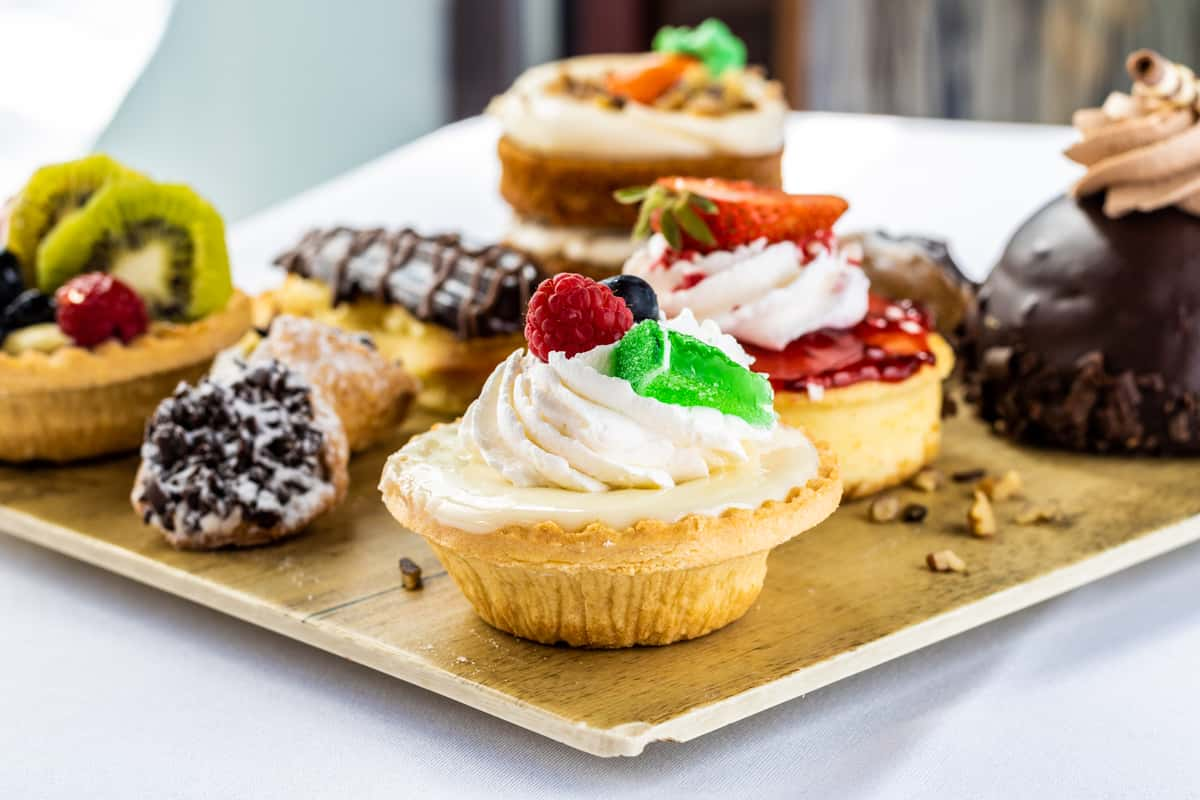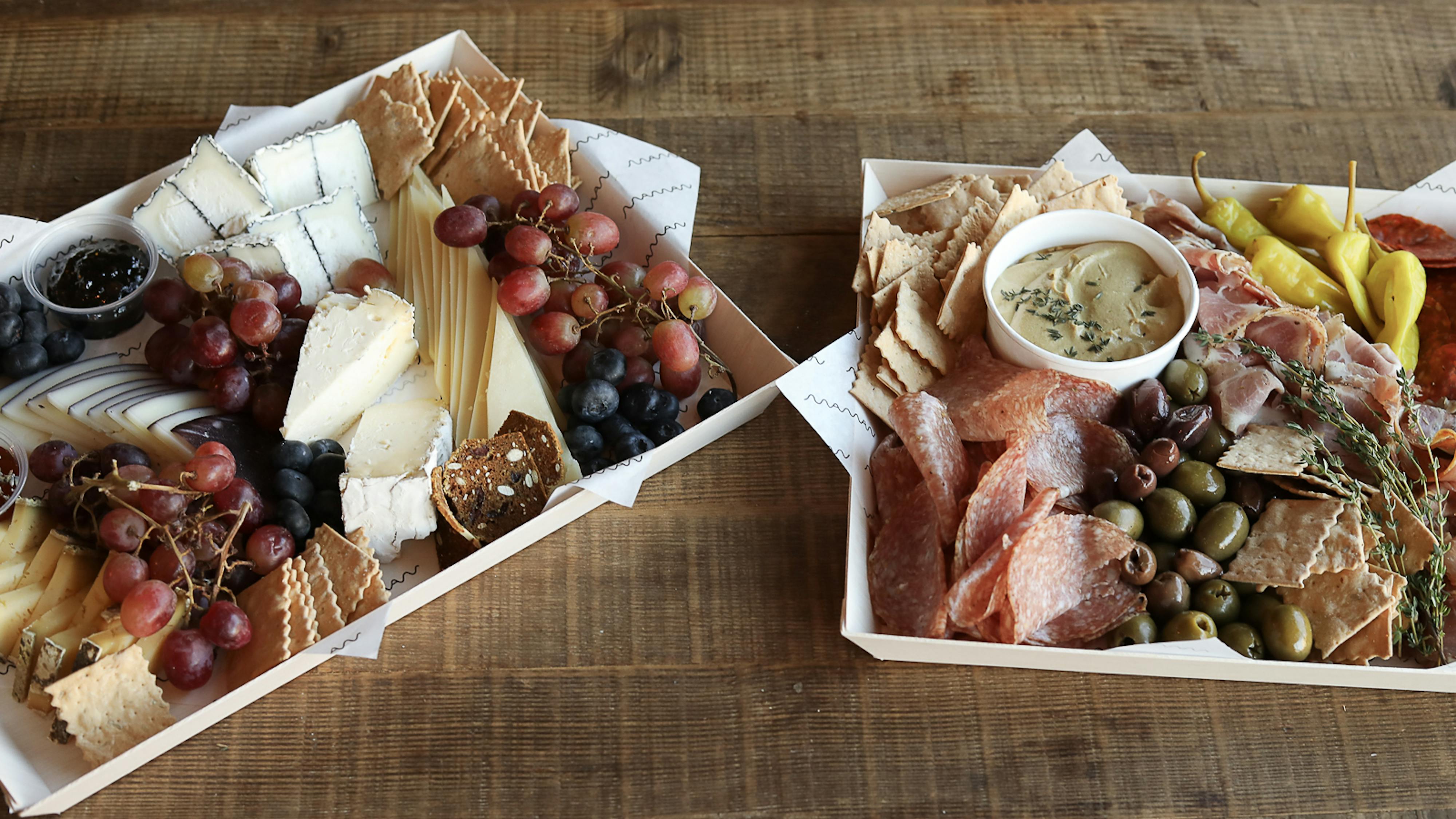Classy Birthday Catering Maddington for an Advanced Touch
Classy Birthday Catering Maddington for an Advanced Touch
Blog Article
Comprehending the Art of Pastry Shop Products: From Freshly Baked Breads to Tempting Pastries and Finger Foods
From the science behind the best loaf of bread, where fermentation and gluten development play critical duties, to the skill needed for creating split breads, each aspect discloses an engaging story of workmanship. The convenience of finger foods shows exactly how taste and texture can be artfully incorporated to involve diverse taste preferences.
The Science of Bread Making
At the heart of every loaf of bread lies an interesting interplay of chemistry and biology. The process of bread making starts with the combination of flour, yeast, water, and salt-- each ingredient playing a crucial duty in the end product. Flour includes healthy proteins, mainly glutenin and gliadin, which, when mixed with water, type gluten (Finger Food Catering Maddington). This flexible network is vital for capturing gases generated during fermentation.
Yeast, a living microorganism, ferments the sugars present in the flour, creating carbon dioxide and alcohol while doing so. The carbon dioxide gas develops bubbles in the dough, causing it to rise and establish a light appearance. The temperature level and moisture throughout fermentation dramatically influence yeast task and, subsequently, the bread's flavor and appearance.

Mastering Bread Methods
Exactly how can one accomplish the fragile equilibrium of texture and taste that defines extraordinary pastry? Grasping bread techniques needs a deep understanding of ingredients, approaches, and the scientific research behind them. Basic to this craft is the option of high-grade active ingredients-- flour, butter, sugar, and eggs-- each playing a crucial function in the last item's taste and appearance.
The method of lamination, which includes folding layers of dough and butter, produces the preferred flakiness in pastries like croissants and smoke pastry. Accuracy in temperature level is vital, as butter needs to continue to be chilly to ensure optimal layers. Correct blending approaches, such as the creaming method for cakes, make sure also unification of air and fat, resulting in a light and ventilated crumb.
Moreover, keeping the ideal moisture levels throughout cooking can dramatically impact the end result, making sure that breads climb correctly and achieve that golden-brown surface. The art of pastry likewise requires patience and practice; each effort enhances one's ability and understanding of the elaborate equilibrium needed to produce tempting pastries that delight the senses. Proficiency in these strategies ultimately distinguishes a skilled pastry cook from an amateur.
Kinds of Finger Foods
The globe of culinary thrills prolongs beyond breads to include a broad array of finger foods, which are celebrated for their ease and convenience. These bite-sized treats are perfect for social events, providing a variety of flavors and structures that satisfy diverse tastes.

On the sweeter side, bite-sized cupcakes and small tarts supply a fascinating coating to any dish, attracting those with a wonderful tooth. In addition, cheese and charcuterie boards work as an advanced option, allowing guests to personalize their bites with an assortment of meats, cheeses, fruits, and nuts.
Flavor Profiles in Baking
Cooking is a complex dance of taste profiles that Source combines sweet, savory, and umami notes to develop an unified experience for the taste. Understanding these profiles is essential for bakers seeking to elevate their creations.
Sweetness often works as the structure in baked products, with sugars, fruits, and all-natural sugar enhancing taste depth. Ingredients such as chocolate and sugar present intricate sweet notes that can either dominate or complement other flavors. Conversely, tasty aspects, commonly found in pastries and breads, provide balance and comparison. Components like flavors, natural herbs, and cheeses can change a basic dough into a diverse taste experience.
Umami, frequently forgotten in cooking, plays a substantial role in enriching flavors. Ingredients such as aged cheeses, fermented items, or even particular nuts add to a savory depth that enhances overall taste.
In addition, the interplay of level of acidity from components like buttermilk or citrus zest can lighten up flavors, offering a revitalizing counterpoint to sweet taste. By attentively combining these flavor accounts, bakers can craft products that reverberate with diverse palates, producing a memorable cooking experience. Eventually, understanding flavor profiles is vital to development in the globe of baking.
Crucial Baking Equipments and Active Ingredients
Comprehending taste profiles in baking collections the phase for choosing the right devices and ingredients More Info that help with the development of phenomenal baked items. A dependable set of baking pans-- such as sheet frying pans, loaf pans, and cake pans-- is essential for accomplishing preferred forms and appearances.
Flour offers as the foundation of many dishes; picking the best kind-- be it bread, bread, or all-purpose flour-- can dramatically impact the result. Baking powder and baking soda are necessary for producing lift in breads and cakes.
In addition, integrating taste boosters like vanilla extract, spices, and citrus passion can raise your productions. By making certain access to these essential tools and active ingredients, bakers can confidently start their culinary trip, crafting a diverse selection of delightful baked goods.
Conclusion
Proficiency in bread production, bread preparation, and finger food discussion reveals the elaborate partnerships between procedures and components. Birthday Party Maddington. Checking out diverse taste profiles improves the baking experience, while necessary tools and ingredients provide the structure for success.
Just how can one attain the fragile balance of appearance and flavor that specifies exceptional bread? Essential to this craft is the selection of top notch active ingredients-- flour, butter, sugar, and eggs-- each playing a vital function in the final item's flavor and structure.

Comprehending taste accounts in cooking collections the stage for picking the right devices and active ingredients that help with the creation of outstanding baked products. Exploring varied flavor profiles enriches the baking experience, while vital devices and active ingredients give the structure for success.
Report this page